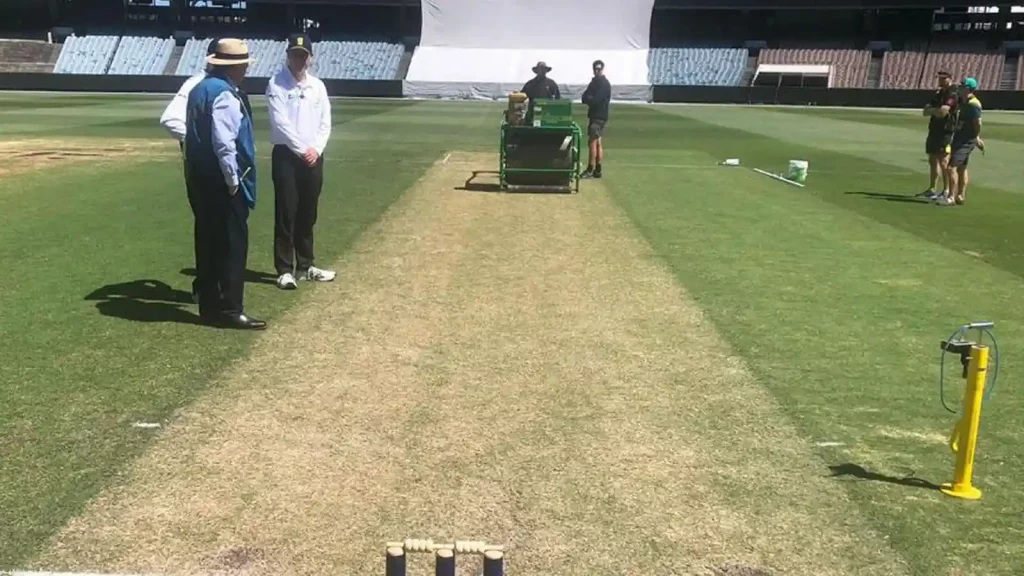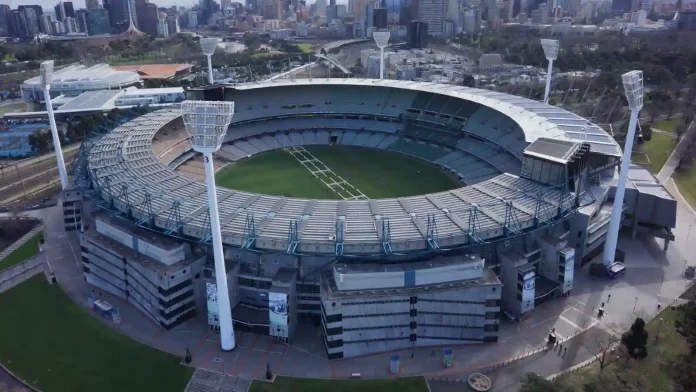The Melbourne Cricket Ground is a world-acclaimed cricket venue embedding its foot deep into Australian cricket’s history. It is the largest stadium in the Southern Hemisphere and the 11th largest globally. It is the biggest stadium in Australia, also known as the “G”. The MCG is counted among the most beautifully designed cricket stadiums in the world. Along with cricket, it has also hosted the Olympics and Commonwealth games since its construction in 1853. The MCG, which also serves as the location of the Australian Sports Museum, has previously played host to important sporting occasions like FIFA World Cup qualifiers, international rugby union games, State of Origin (rugby league) games, and international rules football games between Australia and Ireland. The location also hosts musical performances and other cultural events. So let’s check out Melbourne Cricket Ground (MCG) Seating Capacity, Boundary Length, Big Records, Map, Cost, Size, Pitch Details and History
Melbourne Cricket Ground (MCG) Seating Capacity
The Melbourne Stadium is the largest stadium in Australia and the second-largest in the world, with a capacity of 100024. It recently dethroned from the top spot with the inauguration of renovated Motera Stadium in Gujarat.
Also Read: The Gabba Seating Capacity, Boundary Length, Big Records, Map, Cost, Size, Pitch Details and History
Melbourne Stadium History
The stadium was constructed back in 1853 when the government ordered the 15-year-old Melbourne Cricket Club to relocate from its previous location since the first steam train in Australia would be passing through the oval. Since then, the MCG has amassed a fantastic history that is favourable to any other in the world, hosting numerous international cricket matches, such as the first-ever Test and the 1992 World Cup final, as well as multiple VFL/AFL Grand Finals and the 1956 Olympic Games. In September 1854, the MCG hosted its first cricket match. One Day International cricket matches were played at the venue a century later. As was previously mentioned, the MCG has hosted two Cricket World Cups, in 1992 and 2005, and has hosted the tournament’s championship.
Melbourne Cricket Ground (MCG) Boundary Length
This majestic venue hosts the traditional boxing day Test matches. Like the other Australian grounds, this ground, too, has bigger boundaries. The straight boundaries are about 84 metres, and Square boundaries are about 86 metres.
Melbourne Cricket Ground (MCG) Construction Cost
The Great Southern Stand, MCC Members’ Reserve, Olympic Stand, and Ponsford Stand, which got named in honour of Victorian batsman Bill Ponsford, surround the 171m x 146m field at the MCG.
Melbourne Stadium Land Area
The Great Southern Stand, MCC Members’ Reserve, Olympic Stand, and Ponsford Stand, which got named in honour of Victorian batsman Bill Ponsford, surround the 171m x 146m field at the MCG.
Melbourne Cricket Ground (MCG) Pitch Details

The Melbourne Cricket Ground’s pitch is known for being a favourable surface for batting. It has a typical hard and bouncy Australian pitch. However, teams have had difficulty scoring high totals here during the past few months. For the upcoming T20 World Cup, a good batting surface is to be anticipated. The pitch would offer some assistance to the pacers in the opening overs, but the wicket must primarily support the batters. The middle overs are when the spinners are used. Teams must perform well across the board in order to be competitive in the games they play here.

